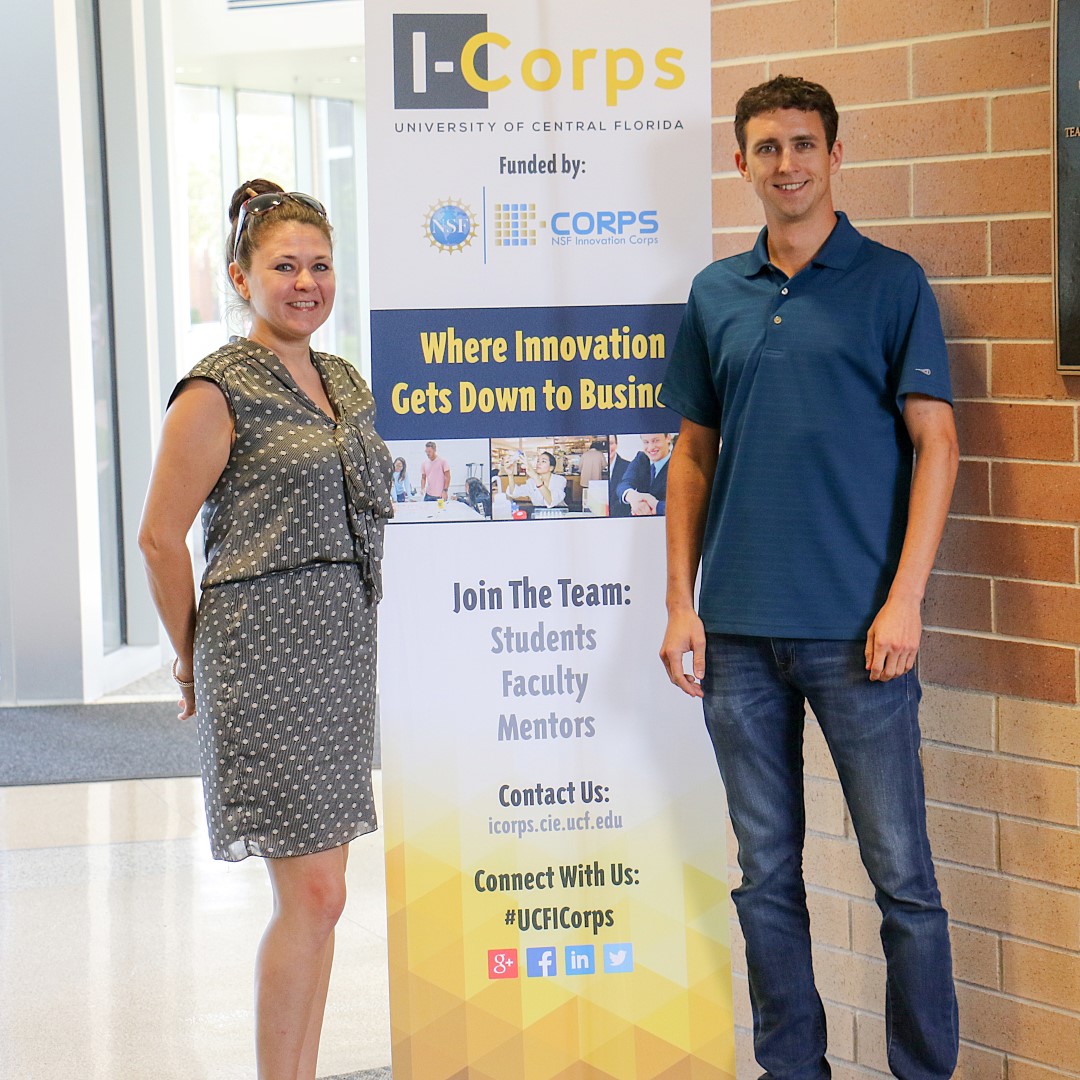WEAR Lab
WEAR Lab designing a vibro-tactical belt to help the visually impaired navigate urban environments
For the visually impaired, navigating a bustling, noisy urban environment can be a daunting task. Among the many challenges, typical navigation instructions—like those apps found on smartphones—are either delivered as a visual wayfinding display and/or offered as auditory instructions.
If you’ve ever been in a busy airport, you can relate to how loud an urban environment can be with people rushing to catch their flights, gate announcements over the public address system and the noise of all the conversations around you. Now imagine trying to concentrate on the auditory directions coming from your smart phone.
Michael Schwartz, a student in UCF’s Human Factors Department, did imagine this … and he envisioned a better way to help the visually impaired navigate in these environments.
As part of the WEAR Lab team participating in UCF’s I-Corps program, Schwartz, the teams’ Entrepreneurial Lead, is working to develop a vibro-tactical belt that can translate the wayfinding directions from a smartphone into subtle vibrations that can be felt by the user. For instance, a short vibration from the belt on the user’s left side would indicate to head in that direction.
In addition to Schwartz, the team also consists of Jerry Aubert, Associate Vice President of Health and Information Technology for UCF’s College of Medicine and the Academic Lead, team member and modeling and simulation student Denise Benkert, and industry veteran and Mentor Michael Judith. The team is in the early prototyping stage.
The technology is dual faceted: the end user component is a vibro-tactile communication system (wearable belt) and the infrastructure component is a sensor network that would be acquired and deployed in cities, municipalities, and larger scale public/private entities. The belt units will be roughly the size of a typical garment belt and slightly heavier due to the sensors and battery components involved, explained Schwartz. The team also is developing the mobile app that will serve as the wayfinding platform.
“Our team knows the science side of bringing this technology and service to fruition, but we didn’t know how to transition it into a business—and that’s where I-Corps came in,” said Schwartz. “The program provided us with the guidance we needed to move from the lab to working on a repeatable, scalable business model.”



